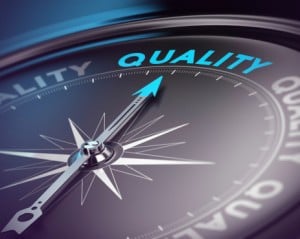 People are human, and that means mistakes are bound to happen. In fact, few of us get through the workday without making a single error, so should 99.9% be considered good enough? Google the phrase “99.9% is good enough” and see what comes back. For the most part you will uncover the following (at 99.9% quality you can expect):
People are human, and that means mistakes are bound to happen. In fact, few of us get through the workday without making a single error, so should 99.9% be considered good enough? Google the phrase “99.9% is good enough” and see what comes back. For the most part you will uncover the following (at 99.9% quality you can expect):
• 1,314 phone calls will be misplaced by telecommunications services every minute.
• 107 incorrect medical procedures will be performed today.
• 18,322 pieces of mail will be mishandled in the next hour.
• 810 commercial airline flights would crash every month.
• 20,000 incorrect drug prescriptions will be written in the next 12 months.
• 22,000 checks will be deducted from the wrong bank accounts in the next 60 minutes.
Some environments, like aviation and medical safety are certainly high-stakes enough to where you just can’t depend on a mulligan, a do-over or a re-load. Other situations present day-to-day examples of defects that, while not life threatening can certainly be annoying and costly. Either way, product and service quality are important.
Most of us depend on people, processes and equipment to get it right the first time. So where does excellent quality begin? Do you think defects occur mostly because someone is lazy or doesn’t care about good quality? Actually, it’s more complicated than that, but in my opinion it starts with management.
Errors frequently happen because an employee is not trained sufficiently. Time and money invested in training can reduce the odds of mistakes happening. Managers often underestimate how much time and training is needed to get an employee up to speed if he or she is assuming a new position. It may be that manager has worked at the company for years or has worked in the profession for years so he or she has lost sight of what it’s like to start in a new position; to have to learn so much, so quickly. A manager who expects too much out of his or her employee without also providing that staff member with the tools to do the job is doing an injustice to that employee and to the company as a whole.
Companies are increasingly realizing that. Last year, spending on employee development increased 15 percent to an average of $1,169 per learner, according to a study done by Bersin and Associates, a firm that researches workplace issues. The research also found that the largest share of the L&D budget went to leadership development, as more than 60 percent of all companies cite “leadership gaps” as their top business challenge.
Mistakes can be costly and so can bringing in new employees to replace the ones who left too soon. Effective managers invest the time and resources in making sure their employees have the tools they need to allow them to succeed.


